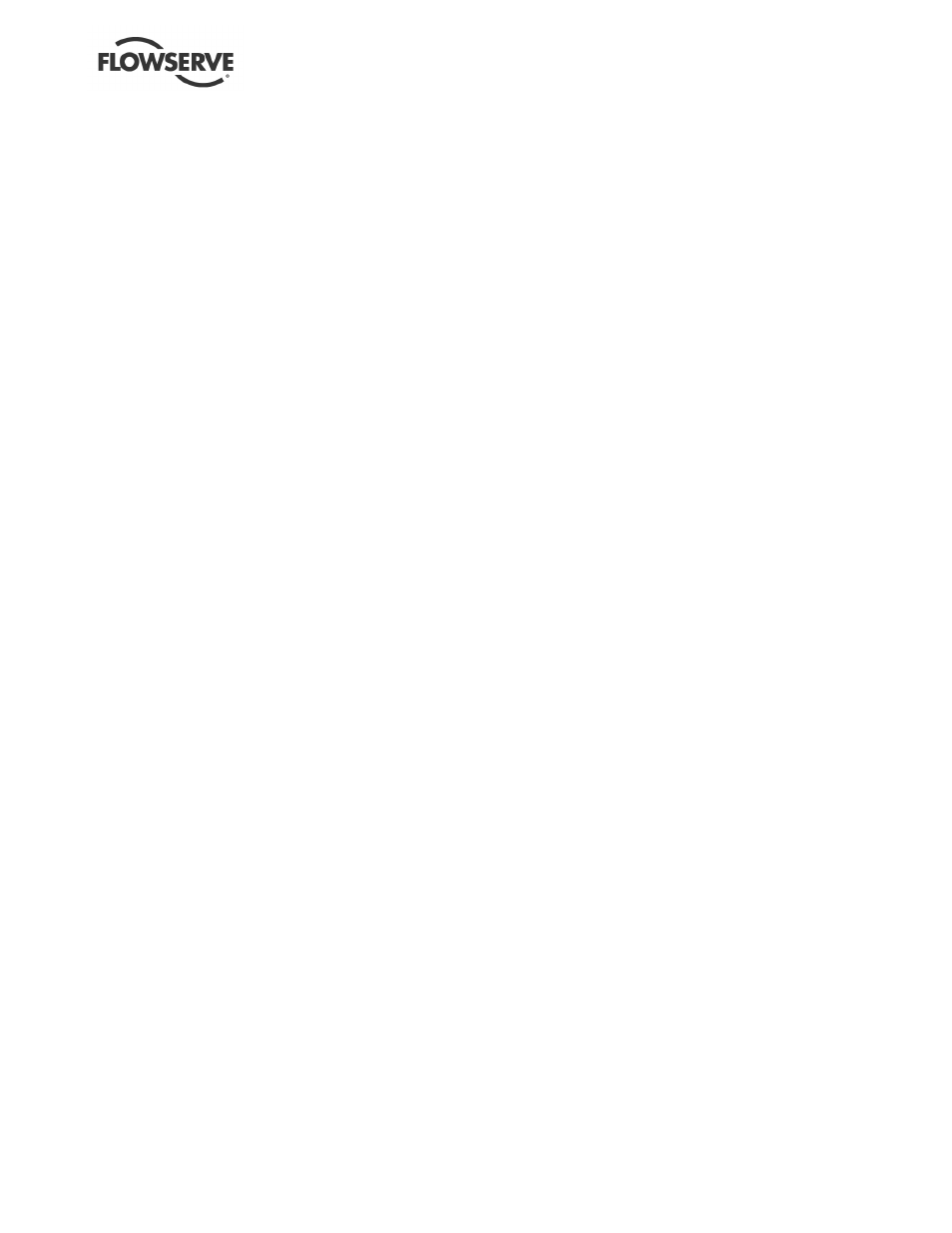Flowserve ESP3 User Manual
Page 18

ESP3 USER INSTRUCTIONS ENGLISH 26999943 08-11
Page 18 of 64
4.1 Location
The pump should be located to allow room for
installation, access, ventilation, maintenance, and
inspection with ample headroom for lifting. Refer to
the general arrangement drawing for the pump set.
If pump is furnished with external flush-lubricated
bearings, the fluid lines must be accessible from
the pump location.
Also important, especially in the larger flow units, is
proper sump design. Liquid velocity approaching
the pump should be one foot per second or less.
When more than one pump is installed and used at
the same time in the same sump, the location and
spacing of the pumps are important. The
guidelines for sump design and pump placement as
outlined in the "Hydraulic Institute Standards" are
recommended.
4.2 Part assemblies
•
Pumps are shipped completely assembled
except for driver, strainer [6531], float controls
(if furnished), pit cover, and the mechanical
seal [4200] or packing [4130] for the stuffing
box on a vapor proof or pressurized design
pump.
•
When mechanical seals are furnished, they
should be installed before the motor is put in
place. Refer to seal installation instructions in
section 6.9.5.
•
Vapor Proof and Pressurized design pumps
are furnished with an upper stuffing box
[4110]. If the stuffing box doesn't already have
the packing [4130] or seal [4200] installed,
then they should be installed before the motor
is mounted. See section 6.
•
The driver will be mounted after the pump is
installed.
•
When the pump is shipped, all threads and all
openings are covered. This protection should
not be removed until installation. If the pump
is removed from service, this protection should
be reinstalled.
4.3 Foundation
There should be adequate space for workers to
install, operate, and maintain the pump. The
foundation should be sufficient to absorb any
vibration and should provide a rigid support for the
pump and motor. Recommended mass of a
concrete foundation should be three times that of
the pump, motor and mounting plate. Supporting
members must be sufficiently strong to prevent
spring action and/or lateral movement.
4.4 Pump Mounting
The pump may be mounted directly on the pit
using the pump mounting plate [6130] or in
conjunction with a pit cover.
a)
The pump was checked during assembly at
the factory to make sure the pump shaft [2100]
rotated freely by hand. Handling during
shipment, storage, or preparation for
installation could have caused distortions
resulting in pump shaft binding. Check the
shaft to make sure that it will rotate freely by
hand.
b)
Check all bolts and nuts for tightness, then
carefully lower the assembled pump into the
pit, taking care not to damage lube lines or float
control equipment. Make sure that any
equipment used to lift the pump or any of
its components is capable of supporting the
weights encountered. Make sure that all parts
are properly rigged before attempting to lift.
c)
Pump mounting plate and/or pit cover must
maintain level within 1/8in/ft. from one side of
the plate to the other, and be supported evenly
at all points before being bolted down.
d)
If the sump doesn't provide a level mounting
surface for the pump, drive wedges under
the mounting plate/pit cover until pump levels
out. The wedges must be able to support the
weight of the entire pumping assembly and
hold the assembly steady enough that no
excess vibration occurs.
e)
Do not bolt the discharge flange of the pump
to the piping until the baseplate foundation is
completely installed.
f)
Run piping to the discharge of the pump.
There should be no piping loads transmitted to
the pump after connection is made.
4.5 Mechanical seals and packing
Pumps supplied with vapor proof construction or
pressurized designs are furnished with an upper
stuffing box [4110] equipped to take mechanical
seals or packing (see vapor proof and pressurized
design cross-sections in section 8). Gas seals are
typically of a canister design, thus the stuffing box
is omitted. The canister seals are mounted directly
to the upper column [1341.1]. Installation
instructions can be found in section 6.9.5
4.5.1 Mechanical seal
Mechanical seals [4200] are typically installed prior
to shipment. Specific order requirements may
specify that the seal be shipped separately, or none
be supplied. It is the pump installer’s responsibility
to determine if a seal was installed. Installation
instruction can be found in section 6
